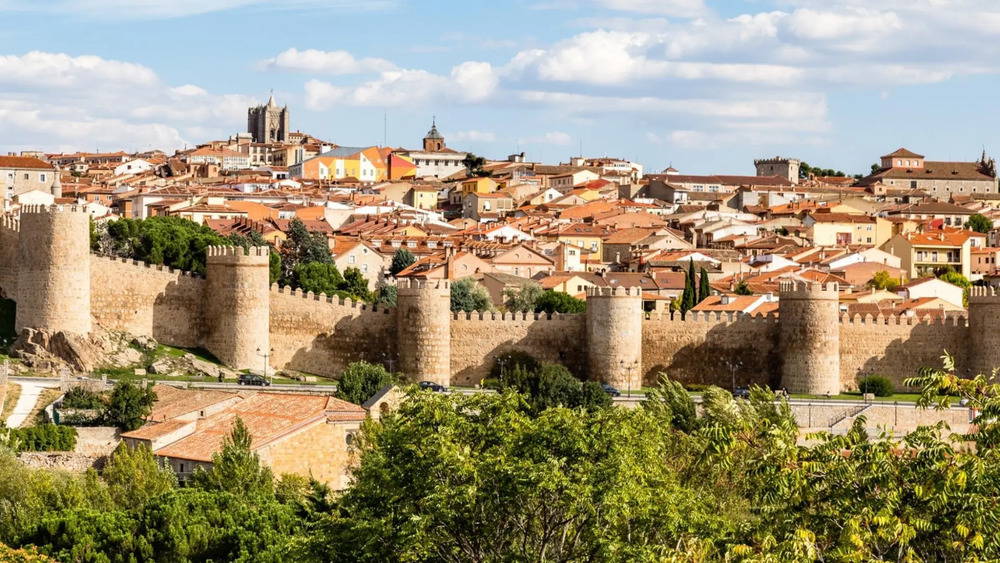 Avila, just 110 kilometres from Madrid and 130 kilometres from Toledo, is a true treasure for lovers of history and architecture. This city, named after its impressive medieval fortress wall, offers many unique attractions that are definitely worth a visit. Avila is famous not only for its magnificent architecture, but also for the rich cultural heritage that has survived to this day.
Avila, just 110 kilometres from Madrid and 130 kilometres from Toledo, is a true treasure for lovers of history and architecture. This city, named after its impressive medieval fortress wall, offers many unique attractions that are definitely worth a visit. Avila is famous not only for its magnificent architecture, but also for the rich cultural heritage that has survived to this day.
How to get to Avila from Madrid
If you plan to get to Avila by public transport - it will be very easy to do so - the transport network in the capital and beyond is very well developed.
By train:
The train leaves from Príncipe Pío station, which can be reached by metro (lines 6 and 10) or suburban trains.
The journey takes 1.5 hours and costs less than 13 euros.
Trains leave approximately every hour between 6:30 and 21:00. It is recommended to book tickets in advance.
There are also trains from Chamartin railway station:
4 trains a day, journey time about 2 hours, cost 9 euros.
Chamartin can be reached by metro (lines 1 and 10) or by suburban trains.
By bus:
The bus is the fastest and cheapest way, taking 1 hour 20 minutes and costing €8.
Buses depart every two hours from the Estación Sur de Autobuses Méndez Alvaro bus station.
The first bus is at 6:30 and the last bus is at 21:00.
The Avila bus station is located near the train station and the historic city centre.
By car:
Of course, this is the easiest way, as you don't depend on public transport schedules. Just type in the name of the city in google maps and it will show us the best route. All you have to do is park and you can walk around without thinking about when the last train or bus will leave...
For sightseeing in Avila, the easiest place to park is in the Parking El Grande car park, where there are almost always spaces available (except of course on weekends and public holidays).
The car parking has a very good location - next to the Muralla de Ávila fortress wall and at €1.50 per hour, which is inexpensive in principle.
If you can't find a space there, you can use the Parking El Rastro. It's not bad either and is close to the centre and interesting places.
Now you can safely go and see the sights of Avila.
What to do in Avila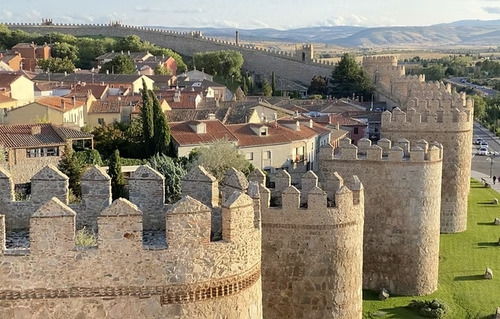
Historic fortress wall of Avila
You can't talk about Avila without mentioning its impressive fortress wall. At over 2.5 kilometres long and up to 12 metres high, it is considered one of the best preserved fortifications in Europe. The wall was built in the 11th century and is a UNESCO World Heritage Site. It includes 88 towers and nine gates that served as defences against attacks.
As you walk along the wall, you can enjoy magnificent views of the surrounding countryside and the city itself. It is recommended to start from the south side of the wall at the San Vicente Gate. This is also where the church with the same name is located.
Basílica de San Vicente. The Basilica of San Vicente in Avila is the second largest church after the Cathedral. It is built in Romanesque style and has an impressive appearance both inside and out. However, you can't get inside for free - there is an entrance fee, but it is inexpensive - 3 euros.
From here you can enjoy a breathtaking panoramic view of the city centre. Walking along the wall, you can discover the different architectural styles that represent the rich history of Avila.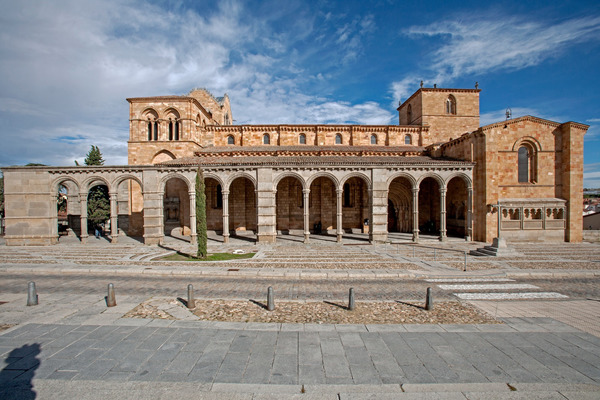
Apart from the walls themselves, it is also important to mention the fortifications and towers nearby, such as the Bastion of Las Aguilas. These places are centres of cultural events and festivals, making the visit more interesting.
Avila Cathedral
 After exploring the fortress wall and the Basilica of San Vicente, the Cathedral of Avila is worth a visit.
After exploring the fortress wall and the Basilica of San Vicente, the Cathedral of Avila is worth a visit.
Catedral de Ávila. The Cathedral of Avila is the first Gothic cathedral of Spain, built from 1172 on the initiative of Alfonso VIII on the site of an old temple dedicated to Salvador. It was originally designed by the French master Fruschel in the Romanesque style, which later changed to Gothic.
The cathedral is in the Burgundian style with a Latin cross plan, three naves and a semicircular quatrefoil. It is decorated with a double ambulatory with chapels between the buttresses. The façade has two towers, one of which is unfinished. Inside, the lighting is provided by magnificent stained glass windows, partially restored after the earthquake of 1755.
Construction continued from the 13th to the 17th centuries with the addition of new interesting elements. In 1914, the cathedral became a national monument.
St Peter's Church
 Iglesia de San Pedro Apóstol. The church is located in Plaza Santa Teresa, east of the fortress wall, opposite the Arco del Alcázar gate. It is the second most important Romanesque church in the city after the Basilica of San Vicente.
Iglesia de San Pedro Apóstol. The church is located in Plaza Santa Teresa, east of the fortress wall, opposite the Arco del Alcázar gate. It is the second most important Romanesque church in the city after the Basilica of San Vicente.
Construction began around 1100 in sandstone from the quarries of La Colilla. The style of the church is Transitional Romanesque with a plan in the form of a Latin cross. It is the oldest parish church, also declared a national monument in 1914. The building looks very atmospheric and beautiful, and the entrance is free, which is great.
Avila Museum
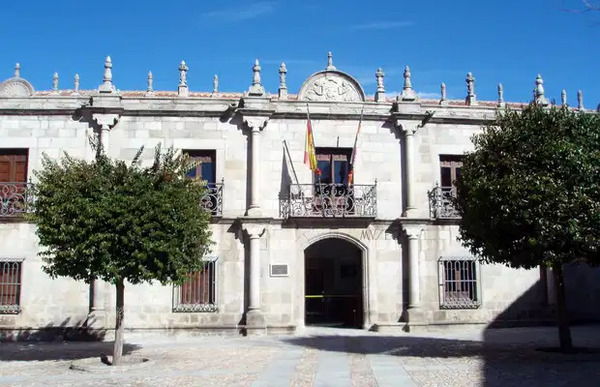 If you're interested in the history of the city and its cultural heritage, the Museo de Avila, located in the city centre, is worth a visit. Here you can learn about the development of the city from ancient times to the present day. The exhibits range from archaeological finds to works of art.
If you're interested in the history of the city and its cultural heritage, the Museo de Avila, located in the city centre, is worth a visit. Here you can learn about the development of the city from ancient times to the present day. The exhibits range from archaeological finds to works of art.
Of particular value are the exhibitions on the life and works of St Teresa, one of the most famous personalities of Ávila. Her life and work had a profound impact on the religious life of the region, and the museum holds exhibitions to honour her memory.
The main square of the city
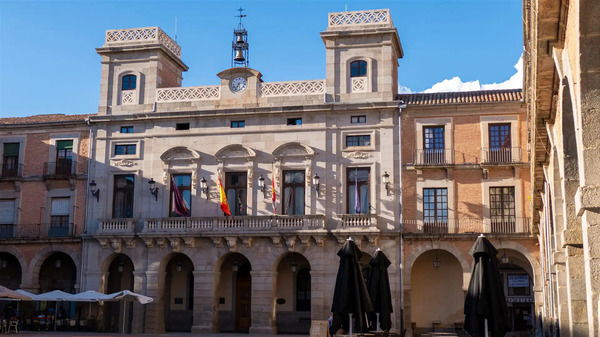 The main square in Avila is called Plaza Mercado Chico. It is home to the local Town Hall and the main buildings of the town. The square is small but cosy, with a relaxed atmosphere and wonderful restaurants serving delicious local cuisine. Stop by here to enjoy a drink in a quiet setting before continuing on to explore the city.
The main square in Avila is called Plaza Mercado Chico. It is home to the local Town Hall and the main buildings of the town. The square is small but cosy, with a relaxed atmosphere and wonderful restaurants serving delicious local cuisine. Stop by here to enjoy a drink in a quiet setting before continuing on to explore the city.
Royal Monastery of Santo Tomas
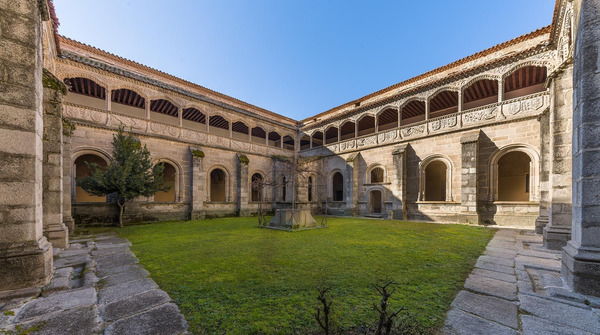 Real Monasterio de Santo Tomás. The Dominican Monastery of Santo Tomas was built between 1482 and 1493 under the patronage of Hernando Nuñez de Arnalte and the Catholic monarchs. In the 16th century it was the headquarters of the Inquisitors, and in the 19th century the University of Santo Tomas was founded. The monastery has survived attacks and fires, been abandoned and rebuilt.
Real Monasterio de Santo Tomás. The Dominican Monastery of Santo Tomas was built between 1482 and 1493 under the patronage of Hernando Nuñez de Arnalte and the Catholic monarchs. In the 16th century it was the headquarters of the Inquisitors, and in the 19th century the University of Santo Tomas was founded. The monastery has survived attacks and fires, been abandoned and rebuilt.
The complex includes three cloisters (inner courtyards of the monastery):
- Novitiate - with 20 arcades in Tuscan style, without ornamentation.
- Del Silencio - for the burials of the monks, with 18 and 38 arches, decorated.
- The royal chambers - with 40 and 56 arches, decorated with carvings.
The palace houses the Museum of Oriental Art and the Museum of Natural Sciences. The monastery became a national monument in 1931.
Avila is a city full of history and unique architecture. Its fortress walls, cathedrals and cultural attractions will not leave any tourist indifferent. Every corner of this city contains pieces of history, imbued with the spirit of time. Do not miss the opportunity to enjoy the local cuisine and culture, which add to the overall impression of your visit.
When planning a trip to Avila, remember that this city is not only a historical centre, but also a living, breathing place where culture continues to evolve. We invite you to discover all its secrets and enjoy every minute spent in this beautiful corner of Spain.


 English
English  Español
Español  Русский
Русский